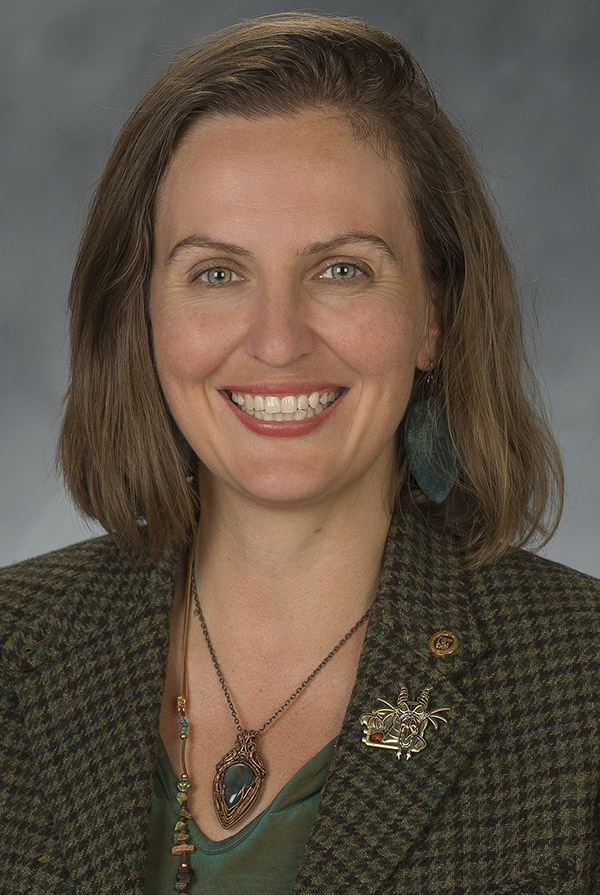 Work done by Professor Anna Klimaszewski-Patterson has gained national recognition. (Photo courtesy of Anna Klimaszewski-Patterson)
Work done by Professor Anna Klimaszewski-Patterson has gained national recognition. (Photo courtesy of Anna Klimaszewski-Patterson)For thousands of years, Native Americans living in the Sierra Nevada routinely set small, controlled fires to manage the forest, increase visibility and herd wild game.
Is it time to embrace the old strategy anew? Should forest managers turn back to those techniques, ramping up prescribed burns to decrease forest density and the threat of catastrophic wildfires?
New research by Anna Klimaszewski-Patterson, a Sacramento State assistant professor of geography, suggests the answer is yes.
“We should be taking Native American practices into account,” said Klimaszewski-Patterson, whose dissertation on the subject recently won the prestigious J. Warren Nystrom award from the American Association of Geographers (AAG).
“After all, they are stakeholders who have been here a heck of a lot longer than we have,” she said. “We should probably be looking at their traditions and incorporating them” into forest management.
Klimaszewski-Patterson uses paleoecology – the study of past ecosystems – as well as environmental archaeology and predictive landscape modeling in her current work, which is funded by the National Science Foundation. She won the Nystrom award after presenting her paper at the AAG’s annual meeting in Washington, D.C., earlier this month.
Using computer models and pollen and charcoal records to track changes in the forest over time, she has found that forest composition dating back 1,500 years likely was the result of deliberate burning by Native Americans, rather than natural phenomena such as lightning strikes. Those forests featured wide open spaces, resembling parks. Today, the same landscape is thick, dense and prone to catastrophic fires that have caused widespread devastation in California in recent years.
Wildfires burned 875,000 acres in the state last year.
For decades, federal forest managers have aggressively used firefighting aircraft, fire lines and other tactics to extinguish wildfires and protect the natural landscape. That approach has resulted in too many trees, which have been weakened by drought. As a result, forests have turned into tinderboxes.
Land managers around the country are increasing the use of prescribed fires to tame the forest. But the approach is controversial, particularly in California, said Klimaszewski-Patterson.
Smoke and flames are “scary” for members of the public, she said, and can drastically affect air quality. Timing of prescribed burns is critical; high winds during certain times of the year can turn deliberate burns into runaway disasters.
But the Sac State geography professor’s research suggests that, done purposefully and carefully, fighting fire with fire makes sense, she said.
“It’s an argument for prescribed burns that are done with intention, with careful consideration of the timing and quantity and the resources that you are managing,” said Klimaszewski-Patterson. “It’s an approach more in alignment with Native American practices, and it’s something we should consider.” – Cynthia Hubert
